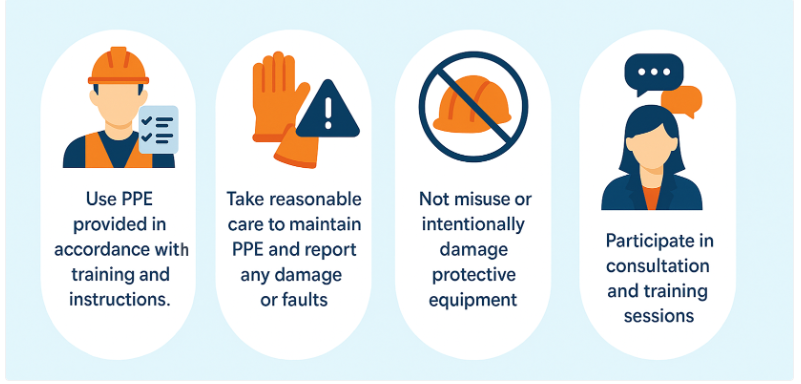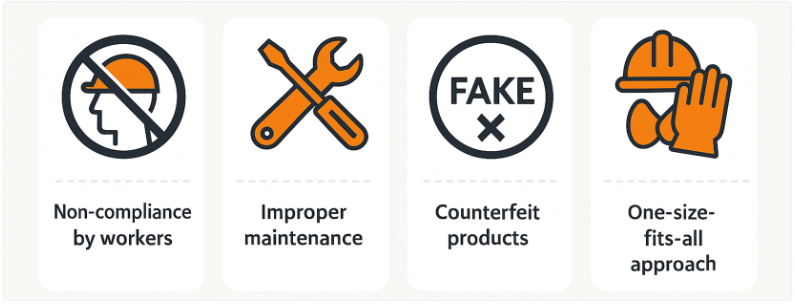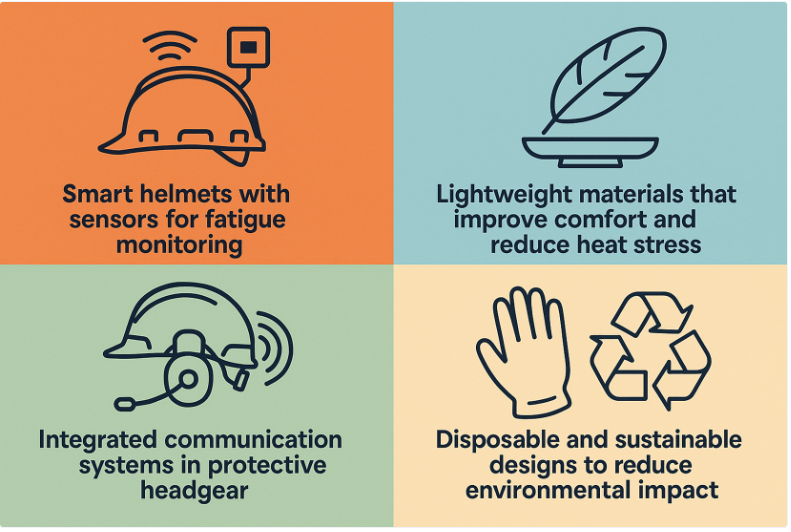PPE and Australian Standards: A Comprehensive Guide for Workplace Safety
Exploring how PPE Australian Standards protect workers and guide organisations toward compliance and safety excellence.
Personal Protective Equipment (PPE) plays a vital role in keeping workers safe across industries. From construction and mining to healthcare, manufacturing, logistics, and agriculture, PPE provides the last line of defense when hazards cannot be eliminated through other control measures. While the concept of wearing protective clothing or gear is universal, compliance with recognised safety standards ensures the equipment used in workplaces is fit for purpose, reliable, and legally defensible.
In Australia, PPE must comply with specific standards to ensure quality, performance, and safety. Employers, contractors, and workers all share a responsibility to understand these requirements. This guide explores the fundamentals of PPE, the relevant standards, employer and worker obligations, and practical strategies for implementation.
What is PPE?
PPE refers to any clothing or equipment designed to protect workers from hazards that may cause injury or illness. Unlike engineering or administrative controls that prevent exposure to hazards, PPE is a personal barrier between the worker and the risk.
Common examples include:

PPE is often used in conjunction with other control measures, forming part of a broader risk management system.
Why Standards Matter
Using PPE that fails to meet safety standards can expose workers to unnecessary risks and employers to legal liabilities. Standards provide benchmarks for performance, durability, and suitability. They ensure equipment is tested, certified, and fit for the hazards it is designed to manage.
For example:
- A respirator that does not meet the correct filtration standard may not protect against harmful dust or fumes.
- Safety boots without certified slip resistance may increase the risk of falls.
- Helmets not tested to withstand impact may fail during a workplace incident.
Compliance with standards is therefore essential to worker safety and organisational integrity.
The Role of Australian Standards
Australian Standards are developed and maintained by Standards Australia, the country’s leading independent body for developing technical standards. These documents outline specifications and guidelines for PPE design, testing, and use.
While some standards are mandatory under law, others are recommended to be adopted as best practice. Employers must identify which standards apply to their industry and ensure PPE supplied to workers complies.
Relevant standards may include:
- AS/NZS 1801 – Occupational protective helmets
- AS/NZS 1337 – Eye and face protection
- AS/NZS 1715 & 1716 – Respiratory protective devices
- AS/NZS 2161 – Occupational protective gloves
- AS/NZS 2210 – Occupational protective footwear
- AS/NZS 1906 & 4602 – High-visibility safety garments
- AS/NZS 1270 – Hearing protection
These standards ensure products perform effectively under Australian conditions, taking into account local hazards, climate, and industry requirements.
Employers who fail to provide compliant PPE may be in breach of the Work Health and Safety (WHS) Act 2011 and related regulations. This is why knowledge of Australian PPE standards is essential across every industry.
Employer Obligations
Employers and PCBUs (Persons Conducting a Business or Undertaking) have a legal duty to:

- Provide suitable PPE – Equipment must protect against identified risks and comply with relevant standards.
- Ensure correct fit – PPE should fit the individual user, considering size, comfort, and compatibility with other equipment.
- Maintain PPE – Employers must ensure items are cleaned, stored, and replaced when damaged or expired.
- Train workers – Employees must understand how to use PPE correctly and when to wear it.
- Consult with workers – Workers should be involved in the selection of PPE to ensure practicality and acceptance.
Failure to meet these obligations may result in penalties, prosecution, and reputational damage.
Worker Responsibilities
Workers also have responsibilities when it comes to PPE. They must:

A strong workplace safety culture requires cooperation between employers and workers.
Selecting the Right PPE
When selecting PPE, organisations should follow a structured process:

Hazard Identification – Determine the specific risks (e.g., chemical exposure, falling objects, noise).
- Standards Check – Ensure PPE complies with the relevant Australian Standard.
- Fit Testing – Particularly important for respirators, harnesses, and helmets.
- Comfort and Usability – PPE should not hinder productivity or create secondary hazards.
- Compatibility – Ensure different items (e.g., eyewear and respirators) can be worn together effectively.
- Consultation – Seek worker input to encourage acceptance and compliance.
Examples of PPE in Practice
Construction
Workers must often wear helmets, steel-capped boots, high-visibility clothing, gloves, and harnesses. Each item must comply with the relevant standards to provide adequate protection on dynamic and high-risk worksites.
Healthcare
Face masks, gloves, gowns, and eye protection are critical. Standards ensure these items provide effective protection against biological hazards such as viruses and bacteria.
Mining
Respirators, helmets, and protective clothing protect against dust, falling rocks, and high temperatures. Compliance with standards is essential in harsh environments.
Manufacturing
Gloves, hearing protection, and eye protection are commonly used. Each must meet standards to withstand specific mechanical, chemical, or noise hazards.
Training and Education
Providing PPE is not enough; workers must know how and when to use it. Training should cover:

Refresher training ensures knowledge remains current.
Common Challenges with PPE

- Non-compliance by workers: Some workers may resist wearing PPE due to discomfort or inconvenience.
- Improper maintenance: Dirty or damaged PPE may not provide protection.
- Counterfeit products: Non-compliant imports may not meet standards.
- One-size-fits-all approach: Ill-fitting PPE reduces effectiveness and discourages use.
These challenges highlight why adherence to Australian PPE standards is so important.
Technology and Innovation in PPE
Advances in technology are transforming the PPE landscape:

Innovation ensures PPE not only meets safety standards but also enhances user experience.
Case Study: High-Visibility Clothing in Logistics
A national logistics provider faced increased near-miss incidents involving forklifts. Investigations revealed poor visibility in warehouses as a contributing factor. The company introduced high-visibility garments certified under AS/NZS 4602.
Additionally, they trained staff in proper care of garments and replaced worn items promptly. Within 12 months, incident rates dropped, and employees reported feeling safer on the job. This case highlights the importance of selecting PPE that complies with relevant standards and integrating it into broader safety strategies.
Future of PPE in Australia
As industries evolve, so too will standards and expectations for PPE. Future developments may include:

- Enhanced psychosocial integration: PPE designed for comfort and reduced fatigue.
- Sustainability focus: Eco-friendly materials and disposal methods.
- Data-driven monitoring: Wearables that track exposure levels and worker health.
- Global harmonisation: Alignment of Australian Standards with international frameworks.
Organisations that stay ahead of these trends will be better equipped to protect their workforce and maintain compliance.
Conclusion
Personal Protective Equipment is a cornerstone of workplace safety, but its effectiveness depends on adherence to recognised standards. In Australia, compliance with standards ensures that PPE is fit for purpose, legally defensible, and reliable in protecting workers from hazards.
Employers must provide compliant equipment, maintain it properly, and train workers in its use. Workers, in turn, must take responsibility for using PPE correctly and reporting any issues.
By understanding and applying PPE Australian Standards, organisations can go beyond basic compliance to foster a culture of safety, accountability, and continuous improvement. In doing so, they protect not only their workforce but also their reputation, productivity, and long-term success.
Related Content
Join Our Newsletter
Receive expert insights, safety updates, and the latest updates in our services and apps. Stay ahead of workplace safety, compliance, and operational efficiency delivered straight to your inbox.

.png)
.png)
.png)
.png)
.png)
.png)
.png)
.png)
.png)
.png)